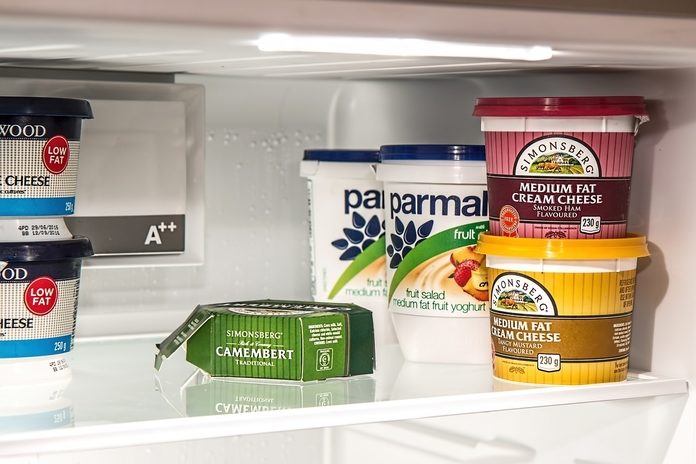
Finding different ways to charge batteries are normal. One of the reasons for this is to be ready in case we lost battery charge, and there’s no charger available. There is one silly question about charging batteries, can you recharge batteries in the freezer? Many think if it were real or not.
Is it possible to recharge batteries in the freezer? This kind of question may raise a lot of curiosity. To answer this question, no a fridge cannot recharge batteries. But storing it in a freezer can prolong the holding charge of the cell.
There is a big difference between charging and storing process. A freezer cannot charge a battery, but it can save the charge for a longer time. Fact says that a battery stored at room temperature may self-discharge and eventually lose all the charge in time. When you refrigerate the battery, it can hold the charge longer and will not self-discharge easily.
The term isn’t re-charging but storing the charge of a battery. Keeping the cells in freezing point will not nor fully charge your battery, but if it has 75% charge in it and places it on the freezer, it will remain 75% after getting out of the fridge.
How To Recharge A Battery In A Freezer
Batteries placed in freezers can only hold the charge as I mentioned earlier. It will not fully charge your batteries 100% if you put it under 75% charge. However, you will not lose the 75% charge when you froze the cells.
There are a lot of misconceptions when it comes to battery freezing. All types of batteries should not be exposed to extreme temperature. Freezing them is exposing them to extreme cold. It may damage the cells if you keep exposing them to cold temperature.
It is a myth that you been hearing wrong all this time. Freezing the batteries will do nothing to your cells. I will tell you why it isn’t wise to put your batteries in the freezer.
Why Should We Never Freeze Our Batteries?
You lower the batteries temperature below the due point. The batteries stay dry at this point. But bringing the array out of the freezer creates a rising temperature which is past their due point. Condensation happens at this point. It will cause corrosion and will mess up your batteries.
Alkaline batteries may be frozen for a while to retain its charge, but it will never be charged only by freezing.
How Much Does Storing Batteries In Freezer Extend The Battery Life?
Storing batteries in the freezer or just near a freezing point can significantly improve and extend its lifespan. But this notion or idea is suitable only for some batteries and does not apply to all kinds of cells.
=> Alkaline batteries for one can help store its remaining charge when place in freezing point.
An alkaline battery which is placed in room temperature will eventually lose its charge through the self-discharge process. Self-discharge happens when the battery is in a warm place. It slowly loses its charge even when you are not using it.
=> NiMH and NiCd are the kind of batteries that discharge much faster compared to alkaline batteries. Fact says that when you stored these two batteries at room temperature, it will self-discharge at a few percents every day.
Once you stored it at lower temperatures, the self-discharge rate also lowers. When you freeze these type of batteries, you will be able to retain at least 90% of its charge. So, it makes sense to be storing these batteries in the freezer.
However, even when you don’t use the freezer, storing it in a cool, dry place will also help extend the battery life.
Does Putting Dead Phone Batteries In The Freezer Revive The Batteries?
Dead batteries should not be placed in the trash right away. There are ways to revive a dead battery. You can still restore the cells in two different ways or method. Find which one will suit you best.
Method 1: Freezing the batteries
1. Remove the battery from the phone.
2. Place the battery in a sealed plastic before placing it inside a plastic container. Avoid using paper bags or foils because water can easily sip in.
3. Place the sealed battery inside your freezer. Leave it on your freezer overnight or at least 12 straight hours.
4. Remove the battery from the freezer. Let it warm down to room temperature. Avoid using the battery while it is frozen.
5. Remove moisture from the battery.
6. Return the array in your gadget but don’t turn it on yet. Charge your phone using its charger. Allow the battery at least 48 hours of charging time.
7. After loading your phone for at least 48 hours, you have to check the battery power level. You will notice that it can hold its charge again.
Method 2: Jumpstarting the batteries
1. Ready everything you will need in jumpstarting your cells. For this, you will need a :
● 9V battery
● Electrical tape
● Electrical wire (You may choose the red and black wire).
2. Connect the positive and negative terminal of your phone battery to the electrical wires. You can quickly determine these through the + and – signs.
Phone terminals usually have more than one battery terminals. Better use the ones that are far from each other. Never used the central terminals.
3. Use electrical tape to cover the connections. Be careful with the contacts so as not to interchange it.
4. Connect the wire of the positive terminal to the positive terminal of your phone. Do the same thing with the negative end.
5. Secure the connections by using electrical tape. Store it at cold temperature and away from water and heat.
6. Let it sit for about a minute or until the battery gets a little warmer. Make sure to monitor the charging time and be on the lookout every time.
7. Disconnect when you feel that the battery is already warm to touch.
8. Place back the battery in your phone and check if it powers on.
9. See the battery level when you put it on. When the charge is not yet done, put it back and wait until the battery becomes fully charged.
What Kind Of Battery Can We Recharge In The Freezer?
There are only three types of batteries that we can store in the freezer. Not all cells are capable of being recharged in the freezer. Other examples would be damaged or harmed when frozen.
● NiMH
● NiCD
● Alkaline batteries
More Details Of Each Battery
These are the list of rechargeable batteries and their characteristics when charging. Not all batteries can be recharged. There are what we call disposable batteries. Disposable batteries when discharged go straight to the trash.
● NiMH or Nickel-Metal Hydride. Compared to NiCd, it has a higher density of energy. It has no metal content which is considered toxic.
● NiCd or Nickel Cadmium. This battery type is low on energy density. It is cheaper and is used for an extended period. NiCd is typically used in video cameras, medical equipment, and two-way radios.
● Lead Acid. It is the most commonly used battery for medical equipment like wheelchairs, UPS system, and emergency lighting. It is considered to be the most economical.
● Lithium-ion. We used this battery for lightweight and high energy density. This battery is susceptible and fragile and requires a protection circuit to secure safety. It is widely used for laptops, netbook, and mobile phones.
● Lithium-Ion Polymer. It is almost similar to a Li-ion battery only that it has a slimmer in geometry. The packaging of this battery is also a lot simpler. Most commonly used for mobile phones.
Characteristics Of Rechargeable Batteries
Though rechargeable batteries are somewhat different from one another, they have these similar characteristics. I am carefully observing the characteristics will perhaps tell us how to maintain them accurately.
1. Cycle life of these batteries depends on the amount of maintenance received. Failure to apply full periodic discharge on this battery may affect its cycle life at least three times.
2. Depth of release can also change the cycle life. Shallow discharges can save battery life than deep discharges.
3. Internal protection circuits can consume at least 3% of the battery’s stored energy.
4. Rechargeable cells are capable of high current pulses.
5. Maintenance of these batteries can be done through topping or equalizing charge.
6. The cost of the battery is divided by the battery cycle, and it does not include the electricity cost and chargers.
7. The temperature range for these battery types are more confined, and it applies only to discharge.
8. Battery discharge is highest after charging; then it begins to taper off.
Of all the rechargeable batteries that I have mentioned, only NiCd has the shortest charging time, but it delivers the highest current voltage. However, NiCd demands a very high maintenance value.
It is indeed tough to determine the correct charging procedure and care for these rechargeable batteries for our gadgets and devices. It is commonly used by almost everyone who owns a gadget and mobile phone.
Asking questions that concerns the charging capabilities of our batteries is but ordinary. Can you recharge batteries in the freezer? It is a simple question that raises a lot of inquiry about the rechargeable batteries we are using.



